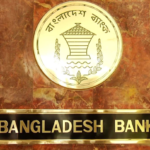Each year on October 16, World Food Day is celebrated worldwide to raise awareness about the critical issues surrounding food security, hunger, and sustainable agriculture. This significant day, established by the United Nations, serves as a reminder of the global mission to end hunger and ensure access to safe, nutritious, and sufficient food for all.
Hunger remains a persistent and heartbreaking challenge in today’s world. While we produce enough food to feed every person on the planet, millions still go to bed hungry every day. This discrepancy is not due to a lack of resources but rather to issues of distribution, access, and sustainable practices. World Food Day seeks to address these pressing concerns and inspire positive action.
The Right to Food
The concept of the “right to food” is at the core of World Food Day. This fundamental human right, recognized by the Universal Declaration of Human Rights, emphasizes that every individual should have access to adequate food, free from hunger and malnutrition. This notion underscores the importance of not only producing enough food but also ensuring it reaches those in need.
The right to food is a fundamental human right recognized by the international community and enshrined in numerous international agreements and declarations. It asserts that every individual has the right to access adequate food, free from hunger and malnutrition. This right is a crucial component of the broader right to an adequate standard of living, which encompasses essential aspects of human dignity, such as shelter, clothing, and health.
Historical Development:
The idea of the right to food has a rich history that spans various cultures and civilizations. However, its codification in modern international law is relatively recent. The Universal Declaration of Human Rights, adopted by the United Nations General Assembly in 1948, laid the groundwork by acknowledging in Article 25 that “everyone has the right to a standard of living adequate for the health and well-being of himself and of his family, including food.”
Subsequently, the International Covenant on Economic, Social and Cultural Rights (ICESCR), adopted in 1966, explicitly recognized the right to food as a legally binding human right. Article 11 of the ICESCR states that “everyone has the right to an adequate standard of living for himself and his family, including adequate food.”
Key Aspects of the Right to Food:
- Availability: The right to food implies that food should be available in sufficient quantities. This involves not only ensuring food production but also addressing issues of distribution, storage, and access to markets.
- Accessibility: The right to food encompasses the concept of accessibility, meaning that food should be affordable and within reach for everyone. This requires addressing issues of income and economic disparities that can limit access to food.
- Adequacy: Adequacy is a critical element of the right to food. It implies that the food available should be nutritionally adequate and safe, meeting dietary needs and cultural preferences.
- Non-discrimination: The right to food is applicable to all individuals without discrimination based on factors like race, gender, age, or social and economic status.
- Accountability: Governments and relevant authorities are responsible for respecting, protecting, and fulfilling the right to food. This includes implementing policies and programs that ensure the right to food for all, particularly for vulnerable and marginalized populations.
Challenges and the Fight Against Hunger:
Despite the recognition of the right to food as a fundamental human right, hunger and food insecurity persist as global challenges. Factors such as poverty, conflict, climate change, and economic disparities contribute to food insecurity. Addressing these root causes and ensuring that the right to food is upheld for all remains a significant global endeavor.
Efforts to combat hunger include sustainable agricultural practices, improved food distribution systems, reducing food waste, and international collaboration through organizations like the United Nations’ Food and Agriculture Organization (FAO) and the World Food Programme (WFP). Additionally, civil society organizations and advocates play a crucial role in holding governments accountable and promoting policies that respect and protect the right to food.
The right to food is not merely an abstract concept but a fundamental human right that directly impacts the lives and well-being of individuals and communities worldwide. Recognizing this right is a vital step in the fight against hunger and food insecurity. Upholding the right to food requires the collective efforts of governments, organizations, and individuals to ensure that no one goes to bed hungry and that everyone has access to adequate and nutritious food.
Sustainable Agriculture for a Better Future
World Food Day also spotlights the significance of sustainable agriculture. As the global population continues to grow, it places increasing demands on food production. Sustainable agricultural practices, which prioritize long-term environmental health, are essential to address these demands while protecting our planet’s resources for future generations.
As the global population continues to grow, the challenge of feeding billions of people while safeguarding the environment has never been more pressing. Sustainable agriculture stands as a crucial solution to this conundrum, offering a path toward a better future where food security, environmental protection, and economic well-being can coexist harmoniously.
The Foundations of Sustainable Agriculture:
Sustainable agriculture is a holistic approach to food production that seeks to meet the needs of the present generation without compromising the ability of future generations to meet their own needs. It rests on three fundamental pillars:
- Economic Viability: Sustainable agriculture endeavors to provide a fair livelihood for farmers and farmworkers. This includes supporting small-scale and family farms, creating market opportunities, and ensuring equitable access to resources.
- Environmental Stewardship: Sustainable practices aim to minimize the environmental impact of agriculture. This involves conserving soil health, reducing water usage, preventing pollution, and mitigating greenhouse gas emissions. Key practices include crop rotation, agroforestry, and organic farming.
- Social Equity: Sustainable agriculture emphasizes social responsibility and community well-being. It focuses on improving the quality of life for all involved in the agricultural process, from farmers and laborers to consumers. Social equity involves fair labor practices, respecting land rights, and promoting food security.
Challenges and Opportunities:
Sustainable agriculture faces challenges, including resistance to change, economic pressures, and the need for knowledge and resources. However, the benefits it offers are numerous and compelling:
- Preservation of Natural Resources: Sustainable agriculture helps protect vital resources like soil, water, and biodiversity. Soil conservation practices prevent erosion and degradation, ensuring long-term fertility. Water-efficient techniques reduce waste and promote water conservation.
- Resilience to Climate Change: Climate change poses a significant threat to global food security. Sustainable agricultural practices enhance resilience against extreme weather events and changing precipitation patterns. They also help reduce the carbon footprint of agriculture.
- Enhanced Food Security: Sustainable agriculture can increase the availability of locally produced, nutritious food, reducing reliance on long and vulnerable supply chains. By promoting crop diversity and local food systems, it enhances food security and reduces the risk of food shortages.
- Support for Small-Scale Farmers: Sustainable agriculture often benefits small-scale farmers by providing them with the tools and knowledge needed to improve yields and income. It empowers local communities and reduces rural poverty.
- Consumer Health: Organic and sustainably produced food tends to have fewer chemical residues and higher nutritional content, contributing to healthier diets.
A Global Effort:
The transition to sustainable agriculture is not the responsibility of a single entity but a collective endeavor. Governments, non-governmental organizations, farmers, and consumers all have roles to play. Policymakers can incentivize sustainable practices, allocate resources, and provide educational support. Farmers can adopt sustainable techniques, such as precision agriculture and organic farming. Consumers can make choices that support sustainable agriculture by seeking out locally produced and ethically sourced food.
Sustainable agriculture is not merely a farming philosophy; it is a commitment to safeguarding our planet’s resources, promoting food security, and ensuring a better future for generations to come. By embracing sustainable agricultural practices, we can reconcile the global demand for food with the need to protect our environment and foster social well-being. In this vision, a world where nourishing the planet and preserving the Earth go hand in hand is indeed possible.
Climate Change and Agriculture
Climate change poses a significant challenge to global food security. More frequent and severe weather events, shifting precipitation patterns, and rising temperatures impact crop yields and livestock. Adapting agriculture to these changes is crucial, and sustainable practices play a pivotal role in this adaptation.
Climate change is one of the most pressing challenges of our time, with far-reaching impacts on every aspect of human life, including agriculture. The intricate relationship between climate change and agriculture is a growing concern as shifting weather patterns, extreme events, and rising temperatures pose significant threats to global food security. However, it also presents an opportunity for innovation and adaptation to secure our food future.
The Impact of Climate Change on Agriculture:
- Altered Growing Seasons: Climate change is causing shifts in the timing of seasons, disrupting traditional planting and harvesting schedules. This can lead to decreased crop yields and increased vulnerability to weather extremes.
- Extreme Weather Events: More frequent and severe weather events, such as droughts, floods, and storms, can damage crops, disrupt supply chains, and increase the risk of crop failure.
- Water Scarcity: Changing precipitation patterns and increasing evaporation rates contribute to water scarcity, affecting irrigation and water availability for agriculture.
- Pest and Disease Spread: Warmer temperatures and altered weather patterns create favorable conditions for the spread of pests and diseases that can devastate crops.
- Soil Erosion: Increased rainfall intensity and soil degradation can lead to soil erosion, reducing its fertility and ability to support crops.
- Loss of Biodiversity: Climate change can disrupt ecosystems, affecting pollinators and other species critical for agriculture.
Adaptation Strategies:
- Climate-Resilient Crop Varieties: Developing and planting crop varieties that are resilient to climate stresses can enhance food security. This includes drought-tolerant, heat-resistant, and pest-resistant crop varieties.
- Water Management: Improved water management practices, such as rainwater harvesting and efficient irrigation systems, can help address water scarcity.
- Conservation Agriculture: Techniques like no-till farming and cover cropping help prevent soil erosion and maintain soil health.
- Crop Rotation and Diversity: Diversifying crops and implementing crop rotation can reduce vulnerability to pests and diseases.
- Climate Information and Forecasting: Farmers can benefit from climate information and weather forecasting to make informed decisions about planting and harvesting.
- Agroforestry: Planting trees alongside crops can provide shade and improve soil health while sequestering carbon.
- Eco-friendly Practices: Embracing organic and sustainable farming practices can reduce the environmental impact of agriculture.
Climate change and agriculture are inextricably linked, presenting both challenges and opportunities. While climate change threatens global food security, innovative adaptation strategies and sustainable practices can help secure our food future. By recognizing the urgency of climate action and investing in resilient, sustainable agricultural practices, we can build a more food-secure world in the face of a changing climate.
Reducing Food Waste
Food waste is another major issue related to food security. A significant amount of food is wasted at various stages of the food supply chain, from production to consumption. Reducing food waste can help address hunger while conserving resources and reducing greenhouse gas emissions.
Food waste is a global problem of colossal proportions, with significant implications for both food security and environmental sustainability. While a considerable amount of food is produced to feed the world’s population, a shocking portion goes to waste at various stages of the supply chain. Addressing food waste is not only an ethical imperative but also a crucial step toward securing a sustainable and food-secure future.
The Magnitude of the Problem:
The scale of food waste is staggering. According to the Food and Agriculture Organization (FAO) of the United Nations, approximately one-third of all food produced for human consumption, equivalent to 1.3 billion tons each year, is lost or wasted. This waste occurs at every stage, from production and post-harvest handling to processing, distribution, and consumption.
Environmental Impact:
Food waste has significant environmental consequences:
- Greenhouse Gas Emissions: Decomposing food waste in landfills generates methane, a potent greenhouse gas that contributes to climate change.
- Resource Consumption: Food production consumes vast resources, including water, land, and energy. Wasting food also squanders these valuable resources.
- Biodiversity Loss: Agriculture often leads to habitat destruction, deforestation, and overexploitation of ecosystems. When food is wasted, these impacts are exacerbated.
Economic Implications:
Food waste has economic repercussions for producers, consumers, and the global economy. It leads to higher costs for farmers, retailers, and consumers, contributing to food price inflation. Reducing waste can result in economic savings for individuals and businesses.
Social Consequences:
Food waste is a stark contrast to the reality of hunger and food insecurity. While billions of tons of food are thrown away, millions of people around the world go to bed hungry. By reducing waste, we can redirect surplus food to those in need and address this social inequity.
Reducing Food Waste:
Efforts to reduce food waste must occur at all levels of the supply chain:
- Farmers and Producers: Implementing better harvesting and storage techniques, as well as reducing overproduction, can help minimize waste.
- Retailers and Distributors: Improved inventory management and donation programs can divert surplus food from landfills.
- Consumers: Being mindful of portion sizes, storing food properly, and using leftovers effectively can reduce waste at the consumer level.
- Government and Policy: Governments can enact policies that encourage food waste reduction and support the redistribution of surplus food to those in need.
- Innovative Technologies: New technologies, such as apps that connect consumers with surplus food at discounted prices, can help reduce waste.
A Path to Sustainability:
Reducing food waste offers a path to sustainability that simultaneously addresses food security, environmental impact, and economic efficiency. It requires a collective effort involving individuals, businesses, and governments. By recognizing the social, environmental, and economic value of food and taking measures to reduce waste, we can create a more sustainable and equitable world, one meal at a time.
Global Collaboration:
World Food Day brings together governments, organizations, and individuals from all over the world. It is an opportunity for stakeholders to share knowledge, experiences, and innovative solutions to tackle food insecurity and promote sustainable agriculture. It emphasizes that the global community can make a positive difference through collective action.
What Can You Do?
You don’t need to be a policymaker or a scientist to contribute to World Food Day’s mission. Here are some ways you can make a difference:
- Support local agriculture: Buy locally produced food and support small-scale farmers.
- Reduce food waste: Be mindful of your food consumption and look for ways to minimize waste.
- Advocate for change: Raise awareness about food security and sustainable agriculture in your community and beyond.
- Donate to food banks and charities: Help those in need by contributing to organizations that combat hunger.
- Educate yourself: Learn more about the issues related to food security and sustainable agriculture.
World Food Day is not just a single day of reflection; it’s a reminder that the fight against hunger and malnutrition is ongoing. By working together and adopting sustainable practices, we can move closer to a world where no one goes to bed hungry. This day calls us to be part of the solution and strive for a better, more equitable future.











